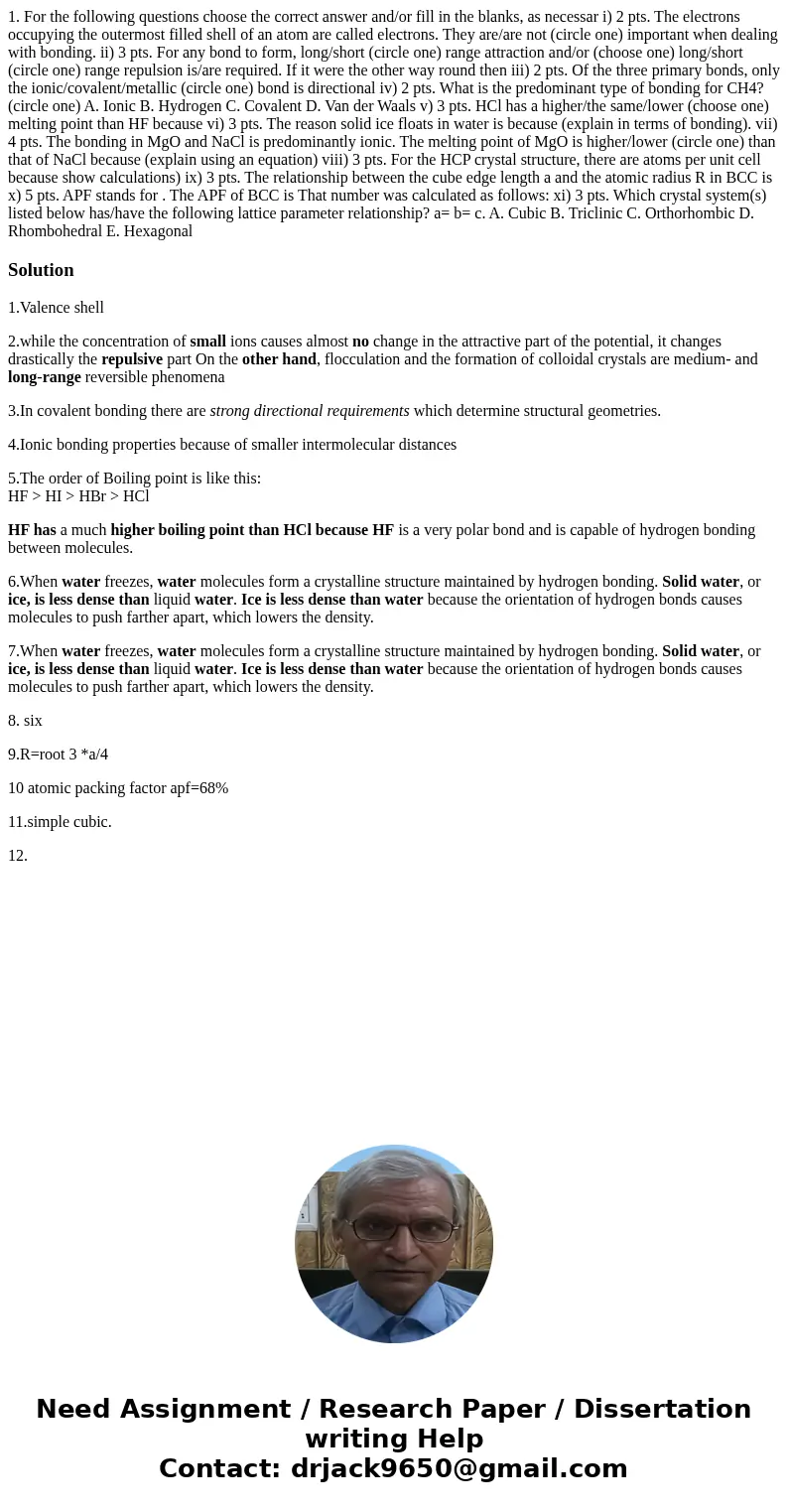1. For the following questions choose the correct answer and/or fill in the blanks, as necessar i) 2 pts. The electrons occupying the outermost filled shell of an atom are called electrons. They are/are not (circle one) important when dealing with bonding. ii) 3 pts. For any bond to form, long/short (circle one) range attraction and/or (choose one) long/short (circle one) range repulsion is/are required. If it were the other way round then iii) 2 pts. Of the three primary bonds, only the ionic/covalent/metallic (circle one) bond is directional iv) 2 pts. What is the predominant type of bonding for CH4? (circle one) A. Ionic B. Hydrogen C. Covalent D. Van der Waals v) 3 pts. HCl has a higher/the same/lower (choose one) melting point than HF because vi) 3 pts. The reason solid ice floats in water is because (explain in terms of bonding). vii) 4 pts. The bonding in MgO and NaCl is predominantly ionic. The melting point of MgO is higher/lower (circle one) than that of NaCl because (explain using an equation) viii) 3 pts. For the HCP crystal structure, there are atoms per unit cell because show calculations) ix) 3 pts. The relationship between the cube edge length a and the atomic radius R in BCC is x) 5 pts. APF stands for . The APF of BCC is That number was calculated as follows: xi) 3 pts. Which crystal system(s) listed below has/have the following lattice parameter relationship? a= b= c. A. Cubic B. Triclinic C. Orthorhombic D. Rhombohedral E. Hexagonal
1.Valence shell
2.while the concentration of small ions causes almost no change in the attractive part of the potential, it changes drastically the repulsive part On the other hand, flocculation and the formation of colloidal crystals are medium- and long-range reversible phenomena
3.In covalent bonding there are strong directional requirements which determine structural geometries.
4.Ionic bonding properties because of smaller intermolecular distances
5.The order of Boiling point is like this:
HF > HI > HBr > HCl
HF has a much higher boiling point than HCl because HF is a very polar bond and is capable of hydrogen bonding between molecules.
6.When water freezes, water molecules form a crystalline structure maintained by hydrogen bonding. Solid water, or ice, is less dense than liquid water. Ice is less dense than water because the orientation of hydrogen bonds causes molecules to push farther apart, which lowers the density.
7.When water freezes, water molecules form a crystalline structure maintained by hydrogen bonding. Solid water, or ice, is less dense than liquid water. Ice is less dense than water because the orientation of hydrogen bonds causes molecules to push farther apart, which lowers the density.
8. six
9.R=root 3 *a/4
10 atomic packing factor apf=68%
11.simple cubic.
12.

 Homework Sourse
Homework Sourse